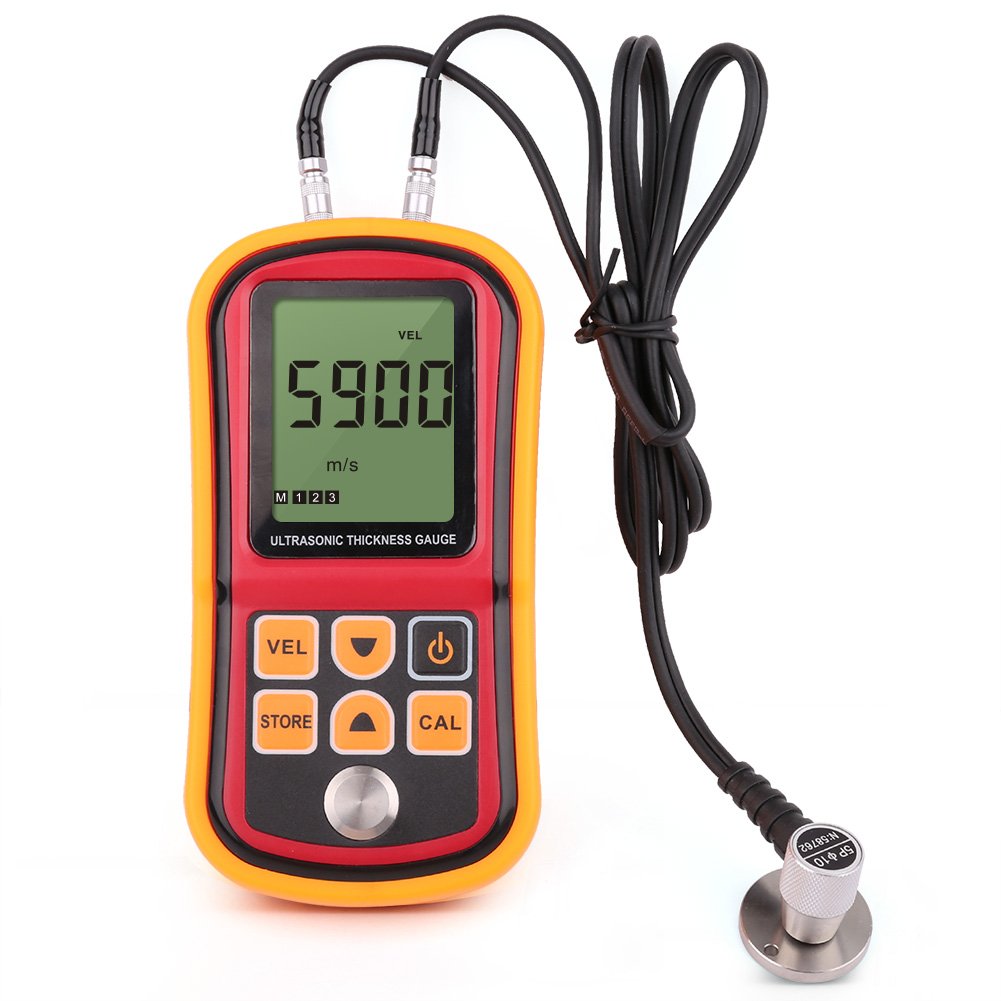
Ultrasonic Thickness Gauge, A Comprehensive Overview
An Ultrasonic Thickness Gauge is a non-destructive testing (NDT) device used to measure the thickness of materials from one side. This technology is widely employed across various industries, including manufacturing, aerospace, automotive, and marine, to ensure the integrity and quality of materials without causing any damage.
Working Principle
The Ultrasonic Thickness Gauge operates on the principle of ultrasonic pulse-echo. It emits ultrasonic sound waves that travel through the material being tested. When these waves encounter a boundary with a different acoustic impedance (such as the back wall of the material), they are reflected back to the transducer. The device then calculates the thickness of the material based on the time it takes for the echoes to return and the known speed of sound in the material (QSA Global NDT) (QSA Global NDT) (Ndt Instruments).
Key Components
- Transducer: The primary component that generates and receives ultrasonic pulses.
- Display Unit: Shows the measured thickness, often providing digital readouts for easy interpretation.
- Couplant: A gel or liquid applied between the transducer and the material surface to facilitate efficient transmission of ultrasonic waves.
Read Too: The Role of AC Yoke in Non-Destructive Testing
Read Too: Radiography Projector (Iridium-192), A Comprehensive Overview
Key Features
- Accuracy and Precision: Ultrasonic thickness gauges provide highly accurate and precise measurements, typically with an accuracy of ±0.001 inches (±0.025 mm).
- Portability: Many gauges are designed to be portable, allowing for easy use in the field or on-site inspections.
- Versatility: Suitable for a wide range of materials, including metals, plastics, ceramics, composites, and glass.
- Data Storage and Transfer: Advanced models offer capabilities to store measurements and transfer data to computers for further analysis.
- Multiple Measurement Modes: Features such as single-echo, multiple-echo, and through-coating modes enhance versatility in different applications.
Applications
- Corrosion Monitoring: Widely used to monitor corrosion and erosion in pipelines, tanks, and other structures.
- Quality Control: Ensures that products meet specified thickness requirements during manufacturing processes.
- Maintenance and Inspection: Regularly checks the integrity of critical components in aerospace, automotive, and marine industries.
- Material Identification: Helps identify materials by measuring the speed of sound within them.
Example Products
- Olympus 38DL PLUS: Known for its high precision and versatility, it offers multiple measurement modes and is capable of storing and transferring data.
- GE Inspection Technologies DMS Go A portable and user-friendly gauge with advanced data logging capabilities and a robust design for field use.
- Elcometer 205: Designed for easy operation, it provides accurate measurements and is suitable for a variety of materials.
Safety and Maintenance
- Calibration: Regular calibration is essential to maintain accuracy. Reference standards should be used to verify the gauge’s performance periodically.
- Battery Maintenance: Ensure the device is adequately charged and replace batteries as needed to avoid interruptions during inspections.
- Proper Handling: Handle the transducer with care, as it is a sensitive component critical to the gauge’s performance.
Conclusion
Ultrasonic Thickness Gauges are indispensable tools in modern industry, offering a reliable, accurate, and non-destructive means of measuring material thickness. Their versatility, portability, and advanced features make them suitable for a wide range of applications, from corrosion monitoring to quality control and maintenance inspections. Understanding their operation, features, and applications helps in making informed decisions for ensuring material integrity and safety.

